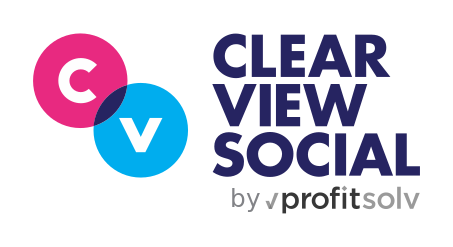https://20899921.fs1.hubspotusercontent-na1.net/hubfs/20899921/Imported_Blog_Media/Screen-Shot-2017-11-14-at-7_47_15-AM-1-Jul-25-2022-11-00-11-29-AM.png
How do you know if an account is fake? A few months ago, I received a connection request from a Private Banker in the UK. I do work with some financial services companies, so I accepted the connection request. Almost immediately, I received an email about a business opportunity and was told to respond to a private email address. I had accepted the connection request of someone who was clearly a spammer with a fake account. So how can you avoid the same situation?
Be on the lookout for model quality photos. If their photograph looks too good to be true it probably isn’t. Bad cropping is also a tell. Why would someone spend hundreds of dollars to get a professional headshot only to throw it on LinkedIn without caring about cropping/positioning? Because fakers spend the bare minimum amount of time building the profile and they do just enough to convince, that’s why. If you think someone’s profile pic has a stock image quality or if you think some of the information on the profile looks odd/fishy, I recommend a reverse image search using TinEye (www.tineye.com) or Google Reverse Image Search (https://images.google.com). It’s the quickest and easiest way to spot a fake. If your hunch is right, you’ll see where else on the web that image has been used. Tin Eye has a handy Chrome extension and Amit Agarwal has created a wrapper of Google Image Search which works on mobile devices. Amit’s tool (https:// ctrlq.org/google/images/) lets you perform a reverse image search from your phone, you’ll initially have to save the image you want to search on your iOS or Android device before you probe.
Fakers don’t have much imagination when it comes to names. They’ll choose short names which either sound bland/repetitive i.e “Jim Jackson” or “Alex Flood”. While some people may connect with people they don’t know on LinkedIn they won’t usually provide a recommendation to someone they don’t know or have not worked with. It’s foreseeable that some fakers will be able to get recommendations from other fakers/partners in crime but it’s rare. Fakers do exceptionally well at school, they excel at prestigious educational institutions, expect to see Wharton MBAs and Yale Law. Fakers usually make mistakes in the experience section, mainly because they are not familiar with functions, titles and industries. It’s the LinkedIn faker’s dilemma, if they don’t add enough work experience it raises flags – if they do, it trips them up.
Here’s a great example of a fake: ‘Alex’ leaves a lucrative Geomatic Surveyor role for stints as a Volunteer Advocate, Travel Writer/Photographer and ends up as a Recruiter. Recruitment is a popular fake profession because fakers understand that we tend to drop our guard and view recruiters with less suspicion when they come knocking.
Alex’ wanted a model photo and he found one. A quick search on TinEye reveals where he borrowed his profile pic:
The person in this photo is actually a guy called Ryan. ‘Alex’ is one of 2 fake accounts that tried to connect with me in the last 7 days. When someone tries to connect LinkedIn shows you who you have in common. I was shocked to see who ‘Alex’ had duped. There were lots of smart and socially sophisticated people in my network who frankly, should know better. I’ve let each of them know about this subterfuge.
So why do they do it? What’s the pay off? Linkedin data has value and is great for email list building. Accurate and current data fetches the highest prices. Imposters on LinkedIn have the ability to damage the reputation and prospects of competitors, they can also engage in corporate espionage with impunity. When a profile has been built with thousands of connections it can be sold to the highest bidder, similar to buying twitter followers. LinkedIn is a big fat juicy target for fraudsters looking to harvest professional grade data. They’ll connect with you to get your email and then they’ll connect with everyone in your network to do the same.
LinkedIn gives fraudsters the semblance of credibility because you’ll connect with ‘Alex’ because he seems legit to you because he’s already connected with James, someone you know and trust. Weak ties on LinkedIn, the relaxed and low friction way we discover people and build relationships, is also an easy route for scammers to infiltrate your inner professional circle. Fraudsters have used social networking for years. They cull personal information posted on LinkedIn and other sites to design targeted attacks which have a higher chance of success. A good example of this is the hijacked LinkedIn account scam when you get a LinkedIn message from someone you know saying that he/she is stranded in a foreign country, wallet stolen, and urgently needs you to wire emergency funds. Or a connection sending you a fake job advertisement which requires you to send your SSN and other personal details. Or someone you know sends you a link and because you trust them to do no harm, you absent mindedly click a link they sent and now you’ve just set a virus or keylogger loose on your computer (spear phishing attack).
Criminals know how we think and act.There’s a lot of information available on Linkedin, the contextual nature of that information gleaned when someone connects with you and your network, elevates it to intel status.
Forewarned is forearmed.
Adrian Dayton is the author of two books on social media for professionals and the Founder of ClearView Social, a software application used by over 20,000 professionals to help them leverage the individual networks of their firms. The article was co-written by Andy Foote, who is trained as a Scottish lawyer. Andy is a copywriter, marketer and professional branding coach, specializing in advanced LinkedIn strategies.



